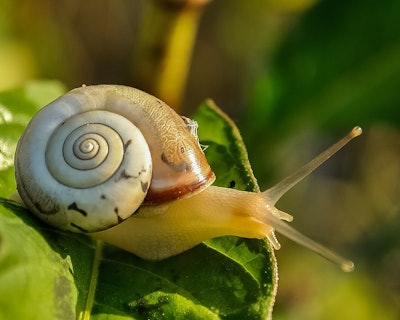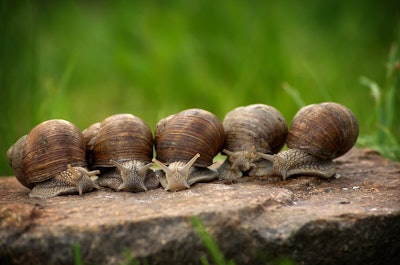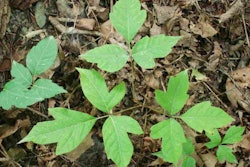 Photo: Pixabay
Photo: PixabayCustomers are quick to notify you when they see pests in their yard that they know are causing problems. But what about those that they just aren’t sure about?
Garden snails and slugs feed on several plants including edibles such as strawberries, tomatoes, and cabbage. They also enjoy snacking on ornamentals like hostas, daylilies, and dahlias.
If your customers have noticed the silvery trails indicative of garden snails and slugs out and about in their landscape, take a look at how you can safely remove them from the area.
Dealing with snails and slugs
Since snails and slugs are nocturnal creatures, they have the opportunity to lay eggs and grow in population size without notice. They are typically drawn to developing seedlings and flowers, and as vegetables and ground fruits ripen, the creatures will be drawn to the soft flesh of fruit close to harvesting.
Snails and slugs are drawn to moist areas, and during the day they will seek out dark, wet areas to hide. To try and cut down on the number of pests in the yard, tell your customers to remove any debris, rotting wood, or piles of leaves that may be around their landscape, and be sure that weeds and grass around the garden are trimmed and collected.
In regard to cutting down on water in the garden, installing drip lines or drip irrigation can help limit excess water around the plants, which will cut down on the appeal to slugs and snails.
Removal
While there’s always the chance your customers might not mind having these little guys living in their yard, for those who want them gone, there are multiple methods of removal that don’t involve pesticides.
Talk to your customer about the possibility of creating surface barriers, as it can also prove to be an effective defense. The muscular “foot” snails and slugs use to get around is less effective when forced to climb on abrasive or acidic surfaces.
The use of diatomaceous earth and crushed eggshells can serve as natural methods for keeping snails and slugs at bay. Diatoms are microscopic green algae that have a glass-like shell, and diatomaceous earth is made from the fossilized remains of these creatures.
Just like this kind of earth, crushed eggshells also have an abrasive texture that can act as a deterrent. While both could potentially help ward off slugs and snails, crushed eggshells don’t always prove as effective as diatomaceous earth. However, crushed eggshells do have the added benefit of providing calcium and other nutrients to the soil as they break down.
If your customers are in a bind, it’s also possible to take used coffee grounds or chopped mint and sprinkle it around the garden.
Planting rosemary or thyme bushes near the affected area can also help keep these pests away with their aroma while offering a pleasant smell to your customers.
Talk to your customers about their watering schedule as well since, as previously mentioned, snails and slugs are much more active at night. Watering the garden in the evening just creates a more inviting environment for the pests, and your customer’s plants will be the ones suffering. Watering plants in the morning will allow the bright sunlight to dry out the plant and surrounding area before evening.
 Photo: Pixabay
Photo: Pixabay










